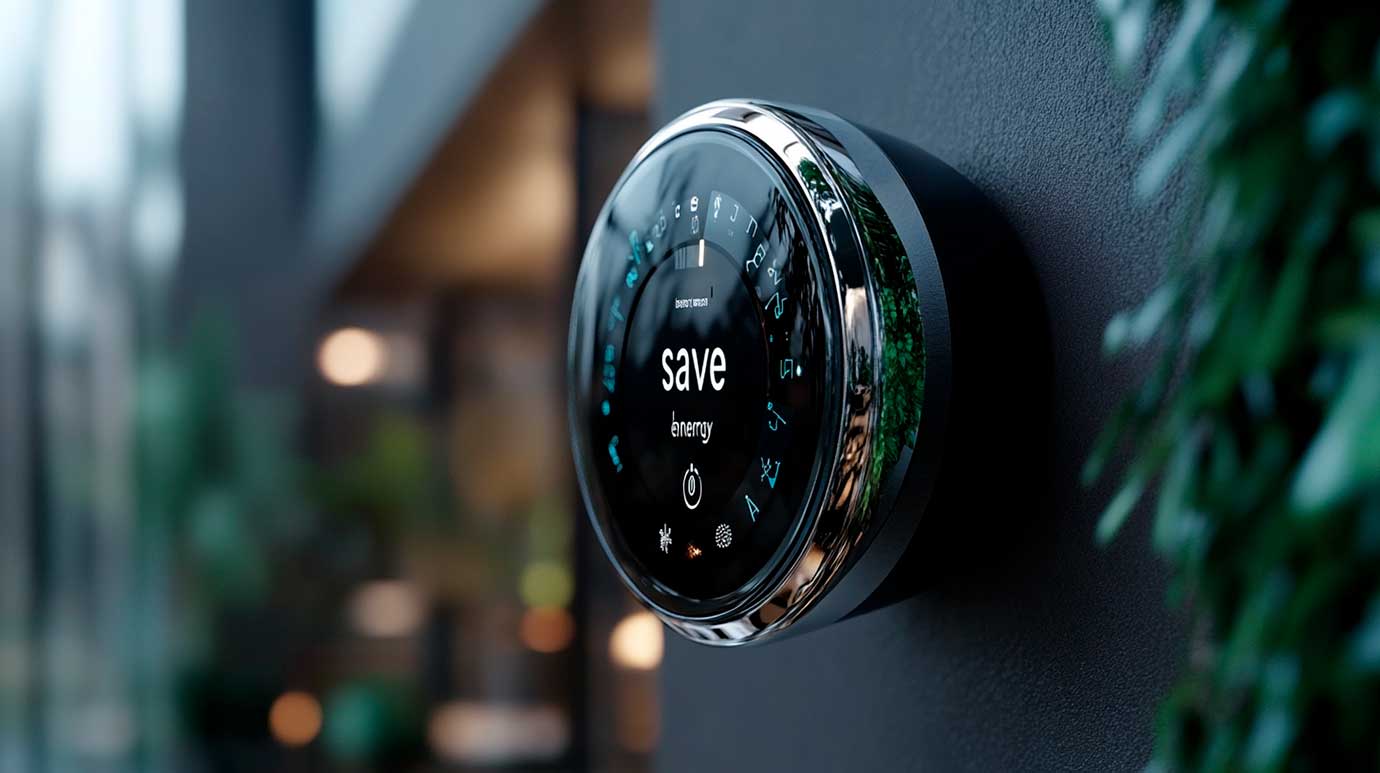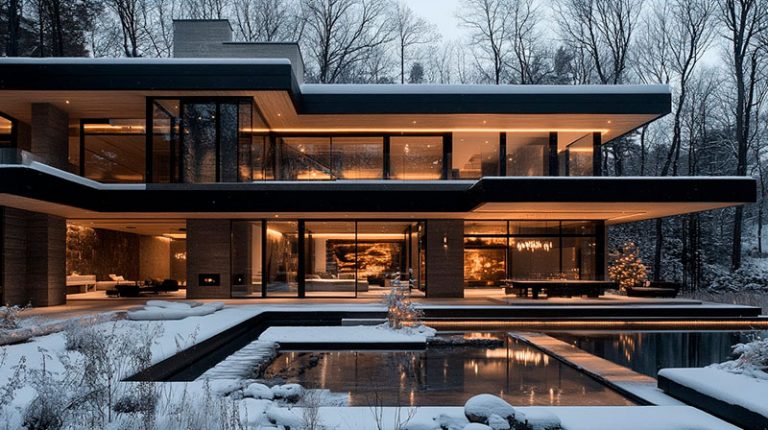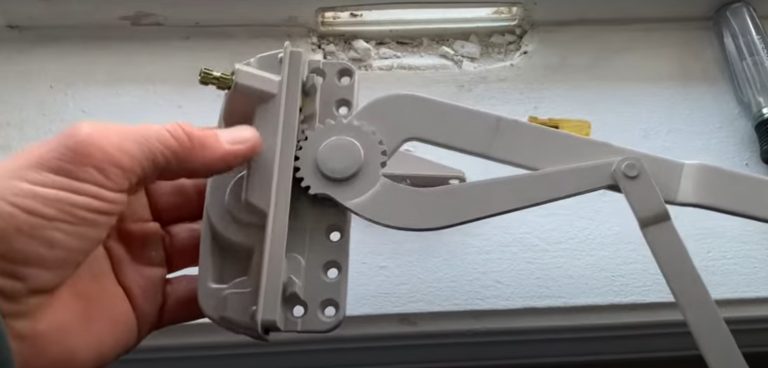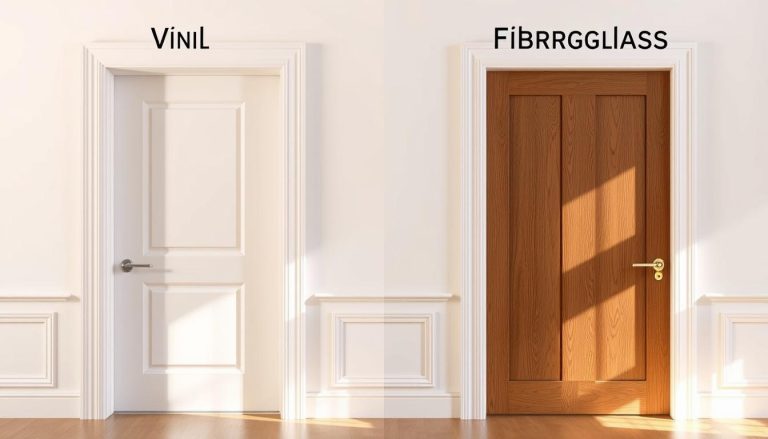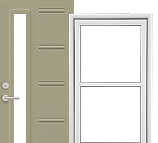
Window Replacement Near Me
Ontario Window Rebate Program 2025
* Can be combined with the interest-free Canada Greener Homes Loan of up to $40,000
Rebate Per Opening:
$100 per window or door
Find related services
10 Ways to Save Heat Energy in Your Home
As a Sales Consultant at Total Home Windows and Doors, I’ve helped countless homeowners across the Greater Toronto Area tackle their energy efficiency challenges. With rising energy bills and those notoriously cold Canadian winters, assessing a home’s energy efficiency can help identify areas for improvement and make conserving heat energy not just nice—but necessary!
When those cold winter months hit the GTA, many homeowners see their energy bills skyrocket. As temperatures drop, heating systems work overtime, consuming more energy and draining your wallet. But there’s good news! You can take practical steps to save heat energy, reduce your carbon footprint, and lower those heating costs.
Before implementing these strategies, it’s crucial to assess your home’s energy efficiency. This can be done through professional audits or DIY checks to identify heat loss and suggest improvements.
Here’s a quick preview of the 10 heat-saving strategies we’ll explore:
- Upgrading to energy-efficient windows and doors
- Sealing air leaks with weather stripping
- Optimizing your heating system
- Investing in a smart thermostat
- Harnessing natural heat from sunlight
- Improving your home’s insulation
- Using ceiling fans strategically
- Adopting zone heating strategies
- Reducing water heating costs
- Taking advantage of energy incentives
“The right windows and doors can reduce your home’s heat loss by up to 30%, making them one of the most impactful investments for energy efficiency.” — Anna Klein, Chief Operating Officer.
Now, let’s dive into each strategy to help you create a more energy-efficient home while keeping your living space comfortable during those freezing Canadian winters.
Find related products
Understanding Heat Energy Loss
Heat energy loss occurs when warm air escapes from your home, forcing your heating system to work harder to maintain a comfortable temperature. This not only increases your heating costs but also reduces your home’s energy efficiency. Common sources of heat energy loss include gaps and cracks in walls, windows, and doors, poor insulation in attics, basements, and crawlspaces, and inefficient heating systems. Additionally, a lack of weatherstripping around doors and windows and inadequate window treatments can contribute to significant heat loss.
Identifying Heat Loss Sources
To identify heat loss sources in your home, start with a simple DIY audit. Check for gaps and cracks in walls, windows, and doors, and seal them with caulk or weatherstripping. Inspect your attic, basement, and crawlspace for adequate insulation. For a more comprehensive assessment, consider hiring a professional to conduct an energy audit. This will help you pinpoint specific areas where heat energy is escaping and provide targeted recommendations for improvement.
1. Upgrade to Energy-Efficient Windows and Doors
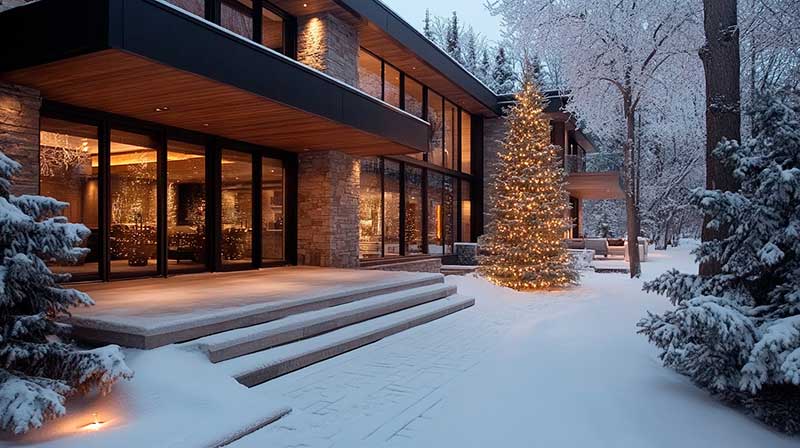
Drafty windows and doors are among the biggest culprits of heat loss in Canadian homes. They create constant air leaks that allow your precious warm air to escape while letting cold air in.
ENERGY STAR®️ certified windows and doors are specifically designed to combat this problem. These products undergo rigorous testing to ensure they meet strict energy efficiency guidelines.
Features of modern energy-efficient windows:
- Double or triple glazing: Multiple panes create insulating air pockets
- Low-E coatings: Reflect heat back into your home during winter
- Insulated frames: Prevent thermal bridging through window frames
- Gas fills: Argon or krypton between panes for better insulation
"Triple-glazed windows can improve your home's energy efficiency by up to 50% compared to single-pane windows. While they cost more upfront, the long-term energy savings make them incredibly cost-effective for our Canadian climate." — Vitaly Shapiro, Vice President of Sales.
For maximum efficiency, consider vinyl windows which offer excellent insulation properties. They’re also low-maintenance and durable against our harsh Canadian elements.
If your south-facing windows receive direct sunlight, they can actually help heat your home naturally during sunny days. Casement windows are particularly good at preventing air leakage because of how they seal when closed.
For doors, fiberglass doors and steel doors offer superior insulation compared to older wooden doors. The tight seal they create helps prevent warm air from escaping your home.
2. Seal Air Leaks with Weather Stripping
Even with energy-efficient windows and doors, air leaks can still occur around frames and in other areas of your home. These drafts make your heating system work harder, increasing energy consumption and heating costs.
Common areas where air leaks occur:
- Around window frames and door jambs
- Through mail slots and pet doors
- Around electrical outlets and switches
- Through attic hatches and basement windows
- Chimney dampers and vents
Weather stripping is a cost-effective solution to seal these leaks. Different types include adhesive-backed foam tape, V-strip, door sweeps, and caulking. For best results, combine these methods for a comprehensive sealing approach.
A simple DIY test to find air leaks is to hold a lit incense stick near potential leak areas on a windy day. If the smoke wavers or is blown away, you’ve found a leak that needs sealing.
"Many homeowners don't realize that air leaks can account for up to 25% of heat loss in a home. Proper weather stripping is one of the most cost-effective energy-saving measures with an excellent return on investment." — Eugene Siukayev, Project Manager
For older homes with particularly drafty windows, window replacement might be the most effective long-term solution. Modern windows with proper installation eliminate most air leak issues at the source.
3. Optimize Your Heating System

Optimizing your heating system is crucial for improving your home’s energy efficiency. Ensuring it runs efficiently is essential for energy conservation and cost savings.
Maintenance tips for optimal heating system performance:
- Replace furnace filters regularly: Dirty filters restrict airflow, making your system work harder
- Schedule annual HVAC maintenance: Professional servicing extends equipment life and improves efficiency
- Bleed radiators: If you have a hot water system, remove trapped air for better heat transfer
- Clean vents and registers: Ensure unobstructed airflow throughout your home
- Check ductwork: Seal and insulate ducts, especially in unheated areas
A dirty furnace filter can reduce airflow by up to 50%, forcing your heating system to consume more energy. Most filters should be changed every 1-3 months during the heating season.
"I always recommend my clients schedule a professional home energy audit. It's the best way to identify specific areas where your heating system might be underperforming or where heat loss is occurring." — Alexandr Naumov, Project Manager.
If your HVAC system is over 15 years old, upgrading to a more efficient model could reduce your heating costs by up to 30%. Look for high AFUE (Annual Fuel Utilization Efficiency) ratings when shopping for new equipment.
4. Invest in a Smart Thermostat
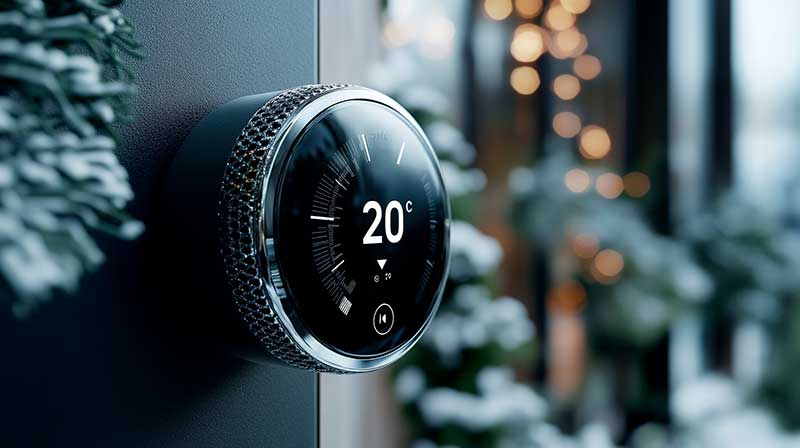
A programmable thermostat is one of the smartest energy-saving investments you can make. By automatically adjusting temperatures based on your schedule, it ensures you’re not heating an empty house or wasting energy while you sleep.
Benefits of smart thermostats:
- Save up to 10-15% on heating costs
- Learn your preferences and create optimal schedules
- Allow remote control via smartphone apps
- Provide energy usage reports to track savings
- Compatible with most HVAC systems
Most smart thermostats pay for themselves within two years through energy savings. Some utility companies even offer rebates for installing them.
Programming tips:
- Set temperatures 7-10°F lower while you’re away or sleeping
- Program the heat to increase about 30 minutes before you wake up or return home
- Use “vacation mode” when away for extended periods
- Take advantage of geofencing features that detect when you’re home
"Smart thermostats are game-changers for energy management. They optimize your heating schedule while adapting to your lifestyle. I've seen clients reduce their heating bills by up to 20% after installation and proper programming." — Daniel Klein, Project Manager.
When shopping for a smart thermostat, ensure it’s compatible with your existing HVAC system and home wiring. Some advanced models can even integrate with smart home systems and respond to weather forecasts.
5. Harness Natural Heat from Sunlight

The sun provides free heating energy, even during cold winter days. Strategic use of this natural resource can significantly reduce your heating costs.
Tips for maximizing solar heat gain:
- Keep curtains and blinds open on south-facing windows during daylight hours
- Close all window coverings at night to retain heat
- Install thermal curtains that help insulate windows
- Consider window blinds that can be adjusted to maximize heat gain while minimizing glare
- Use reflective panels behind radiators to direct more heat into rooms
South-facing windows receive the most direct sunlight during winter months. If you’re planning renovations or a new home, consider maximizing window area on the south side of your home.
"Natural light isn't just good for energy savings—it improves mood and overall wellbeing. When designing energy-efficient homes, we always consider window placement and size for optimal solar heat gain." — Anna Klein, Chief Operating Officer
Thermal mass materials like concrete floors, stone countertops, or brick walls absorb and slowly release heat from the sun. Positioning these materials where they receive direct sunlight creates natural heat storage that continues warming your home even after sunset.
For homes with limited natural light, consider fixed windows or picture windows on south-facing walls to maximize solar gain without sacrificing insulation.
6. Improve Your Home's Insulation
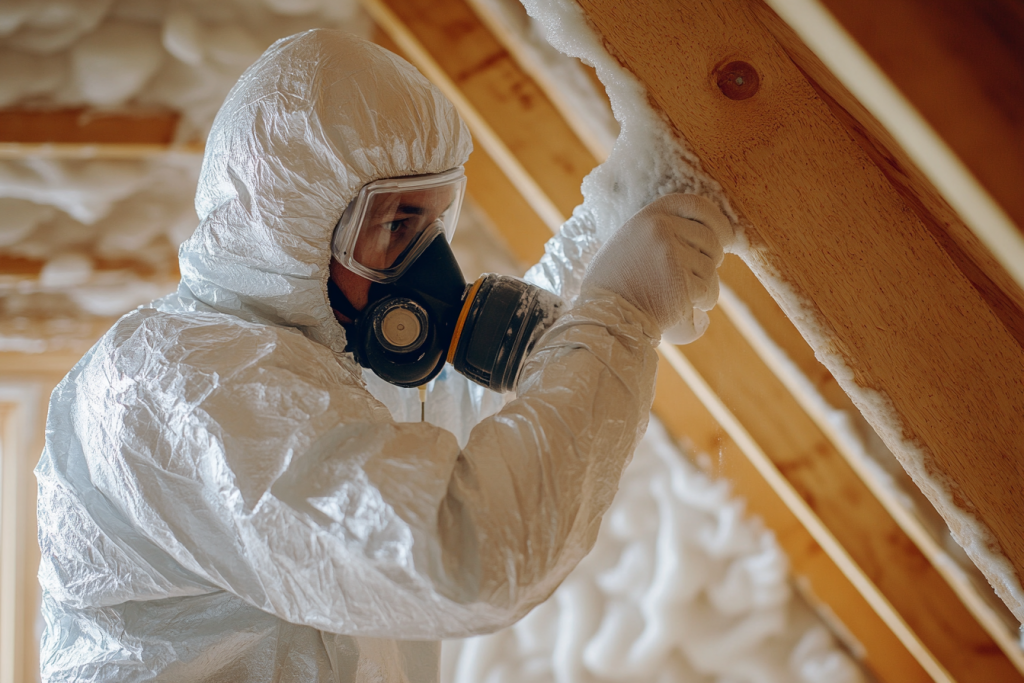
Proper insulation is crucial for maintaining a consistent temperature and reducing the workload on your heating system. It creates a thermal barrier that prevents heat transfer between your warm home and the cold outdoors.
Key areas to insulate:
- Attic (highest priority, as heat rises)
- Exterior walls
- Floors above unheated spaces
- Crawl spaces and basements
- Around windows and doors
Each area requires specific insulation types and R-values (resistance to heat flow). For Canadian homes, the recommended attic R-value is R-50 to R-60, significantly higher than in warmer climates.
Insulation options include:
- Fiberglass batts or rolls
- Blown-in cellulose
- Spray foam
- Rigid foam boards
- Reflective insulation
"Upgrading your attic insulation is one of the most cost-effective energy improvements. It can reduce heating costs by up to 20% while making your home more comfortable by eliminating cold spots." — Vitaly Shapiro, Vice President of Sales
When upgrading insulation, don’t forget about proper ventilation to prevent moisture buildup, which can reduce insulation effectiveness and cause structural damage over time.
For a comprehensive approach, combine insulation improvements with window replacement and air sealing for maximum energy efficiency gains.
7. Use Ceiling Fans to Distribute Heat
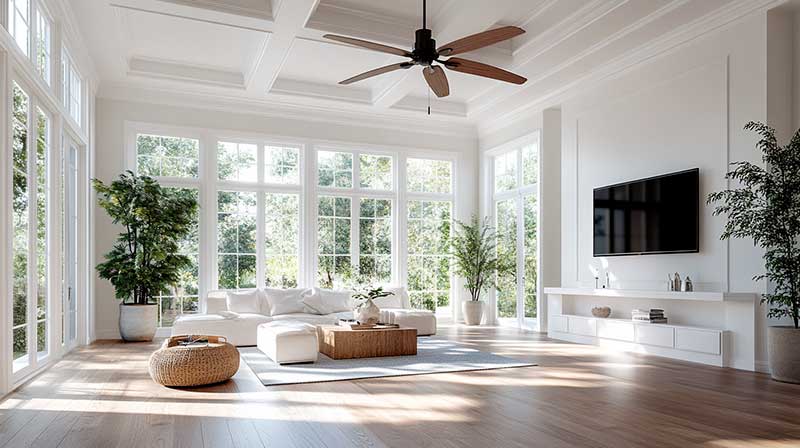
Many homeowners don’t realize that ceiling fans aren’t just for summer cooling. By reversing the blade direction in winter, fans can help distribute warm air that naturally rises to the ceiling.
How to use ceiling fans effectively in winter:
- Set fans to rotate clockwise at low speed
- This creates an updraft that pushes warm air down along walls
- Especially effective in rooms with high ceilings
- Can improve comfort while allowing you to lower the thermostat by 1-2°F
By circulating warm air throughout the room, ceiling fans reduce temperature stratification (where hot air collects at the ceiling and cool air remains at floor level). This creates more consistent comfort and allows your heating system to work more efficiently.
"Ceiling fans are often overlooked as winter energy savers. Simply reversing your fan direction can improve heating efficiency by up to 15% by pushing trapped warm air back down into your living space." — Eugene Siukayev, Project Manager
The key is using the lowest speed setting to avoid creating a cooling wind chill effect. You should feel gentle air movement but not a direct breeze.
For two-story homes, ceiling fans help move warm air from south-facing rooms to colder parts of the house, maximizing natural solar heat gain throughout your living space.
8. Adopt Zone Heating Strategies
Why heat rooms you’re not using? Zone heating focuses warm air where you need it most, allowing you to lower the thermostat in rarely used spaces.
Effective zone heating techniques:
- Close vents in unused rooms (but never more than 40% of total vents)
- Keep interior doors closed to maintain temperature zones
- Use space heaters strategically in occupied rooms
- Install thermal curtains as room dividers in open floor plans
- Consider ductless mini-split systems for targeted heating
Modern smart vents can automatically adjust airflow based on occupancy and desired temperature, creating an automated zone heating system without major renovations.
"Zone heating can reduce energy consumption by up to 30% in larger homes where certain areas remain unoccupied during the day. It's about being smart with your heating resources." — Alexandr Naumov, Project Manager
When using space heaters, choose energy-efficient models with thermostats and safety features. Remember that while they’re effective for zone heating, they’re not cost-effective for heating entire homes compared to central systems.
For the ultimate in zone control, consider upgrading to a multi-zone HVAC system when replacing your heating equipment. These systems use multiple thermostats to maintain different temperatures in different areas of your home.
9. Reduce Water Heating Costs
Water heating accounts for about 18% of the average home’s energy use. Improving efficiency in this area complements your space heating efforts for comprehensive energy savings. Additionally, enhancing water heating efficiency contributes significantly to your home’s energy efficiency by reducing heat loss and optimizing energy use.
Water heating efficiency tips:
- Lower your water heater temperature to 120°F (49°C)
- Insulate hot water pipes and the water heater itself
- Install low-flow showerheads and faucet aerators
- Fix leaky faucets promptly
- Use cold water for laundry when possible
- Schedule regular water heater maintenance
For an immediate impact, wrap your water heater in an insulating blanket (for older models) and insulate the first 6 feet of hot water pipes leading from your water heater.
"Many homeowners don't realize that lowering their water heater temperature by just 10 degrees can reduce water heating costs by 3-5% while still providing plenty of hot water for everyday needs." — Daniel Klein, Project Manager
Consider upgrading to a tankless water heater, which heats water on demand instead of constantly maintaining a tank of hot water. While installation costs are higher, they can reduce water heating energy by up to 30%.
For homes with south-facing roofs, solar water heating systems can be an excellent investment, potentially cutting water heating costs by 50-80% annually.
Energy-Saving Habits
Developing energy-saving habits can significantly reduce heat energy loss and lower your energy bills. Here are some simple tips to get you started:
- Turn Down the Thermostat: Lowering your thermostat by just 1-2 degrees can conserve heat energy and save money on heating costs.
- Use Thick Curtains or Drapes: These can help reflect heat back into your home and keep cold air out, especially during the night.
- Install a Smart Thermostat: Smart thermostats optimize your heating and cooling costs by learning your schedule and adjusting temperatures automatically.
- Use Area Rugs: Placing rugs on your floors can provide additional insulation and reduce heat loss.
- Seal Gaps and Cracks: Prevent warm air from escaping by sealing gaps and cracks around doors and windows with weatherstripping or caulk.
Simple Energy-Saving Tips
In addition to the habits mentioned above, here are some more simple energy-saving tips:
- Use a Programmable Thermostat: Automate your temperature adjustments to save energy when you’re not home.
- Install Energy-Efficient Windows: Upgrading to energy-efficient windows can significantly reduce heat loss.
- Add Insulation: Insulating your attic, basement, or crawlspace can help conserve heat energy and improve your home’s overall energy efficiency.
- Use Ceiling Fans: Set your ceiling fans to rotate clockwise in winter to circulate warm air and reduce heating costs.
- Consider Advanced Heating Systems: Installing a heat pump or radiant floor heating system can provide efficient heating and further reduce your energy consumption.
By adopting these energy-saving habits and tips, you can make a significant impact on your home’s energy efficiency, reduce your heating costs, and create a more comfortable living environment.
10. Take Advantage of Energy Incentives
Various government programs, utility rebates, and tax credits are available to help offset the cost of energy-efficient improvements. These incentives can significantly reduce payback periods and make upgrades more affordable.
Available incentives in Canada:
- Canada Greener Homes Grant (up to $5,000 for qualifying improvements)
- Home Efficiency Rebate Plus (Ontario)
- Enbridge Gas Home Efficiency Rebate
- Local utility company rebates
- GST/HST rebates for energy-efficient new homes
- Manufacturer rebates and financing options
Many incentive programs require pre-approval and professional energy audits before and after improvements. Plan ahead to ensure you qualify for maximum benefits.
"Many of our clients are pleasantly surprised to learn they can get up to 30% of their window replacement costs covered through various rebate programs. It significantly improves the ROI timeline for energy-efficient upgrades." — Anna Klein, Chief Operating Officer
At Total Home Windows and Doors, we can help you navigate available rebate programs and ensure your new windows and doors meet all qualifying criteria. We often help with the paperwork too!
Check the window rebate Ontario page on our website for the most current information on available incentives.
Conclusion
Implementing these ten strategies can dramatically reduce your home’s heat energy consumption while keeping your living spaces comfortable during cold winter months. From simple no-cost adjustments like optimizing your thermostat settings to larger investments like energy-efficient windows, each step contributes to a more comfortable, sustainable home.
The best approach is to start with a comprehensive energy audit to identify the specific areas where your home loses the most heat. This allows you to prioritize improvements for maximum impact and return on investment.
At Total Home Windows and Doors, we specialize in helping GTA homeowners transform their homes with energy-efficient windows and doors that stand up to Canadian winters. Our team of experts can guide you through the selection process, ensuring you choose products that maximize energy efficiency for your specific home design and needs.
Ready to start saving on your heating costs? Contact our team for a free consultation and learn how energy-efficient windows and doors can make a significant difference in your home’s comfort and energy bills. Visit our showroom to see our full range of energy-saving options or call us to schedule an in-home assessment.
Stay warm and save money this winter with Total Home Windows and Doors!
Frequently Asked Questions
Is it cheaper to leave heat on all day?
No, it’s generally more cost-effective to lower your thermostat when you’re away or sleeping. Maintaining a constant high temperature requires more energy than reheating your home when needed. Program your thermostat to adjust automatically based on your schedule.
What is the most efficient way to run heat in the winter?
Set your thermostat to 68°F (20°C) when you’re home and awake, and lower it by 7-10°F when sleeping or away. Combine this with proper insulation, sealed air leaks, and regular heating system maintenance to maximize efficiency.
What temperature should I set my heat to save money?
For optimal savings, set your thermostat to 68°F (20°C) during waking hours at home. Lower it to 62-65°F (16-18°C) when sleeping or away. Every degree below 70°F (21°C) can save approximately 3% on heating costs.
How can I reduce heat loss through windows?
Install thermal curtains, apply window film, use draft stoppers, and ensure proper weatherstripping around frames. For a permanent solution, upgrade ENERGY STAR certified windows with double or triple glazing for maximum insulation.
Do ceiling fans help with heating costs?
Yes, reversing your ceiling fan to run clockwise during winter pushes warm air down from the ceiling into your living space. This improves air flow and heat distribution, allowing you to lower your thermostat setting while maintaining comfort.
How often should I replace my HVAC air filters?
Check filters monthly and replace them every 1-3 months, depending on usage and household factors like pets. Clean filters improve air flow, reduce heating costs, and extend equipment life while maintaining indoor air quality.
Is it worth upgrading to a smart thermostat?
Absolutely. Smart thermostats can save 10-15% on heating costs by automatically adjusting temperatures based on your schedule. They learn your preferences, provide energy usage reports, and allow remote control through your smartphone.
How significant is standby power consumption for heating costs?
Devices in standby mode can draw power constantly, adding 5-10% to your energy bill. Unplug electronics when not in use or use power strips to completely cut off electricity to multiple devices simultaneously.
Should I close vents in unused rooms?
Yes, but with caution. Closing vents in unused rooms can help focus heating where needed, but never close more than 40% of your vents. This prevents excess pressure buildup that could damage your heating system.
How often should I schedule a home energy audit?
Regular energy audits are essential for maintaining and improving a home’s energy efficiency. A professional home energy audit is recommended every 3-5 years or after major renovations. These assessments identify specific areas of heat loss and recommend targeted improvements for maximum energy savings during colder months.

